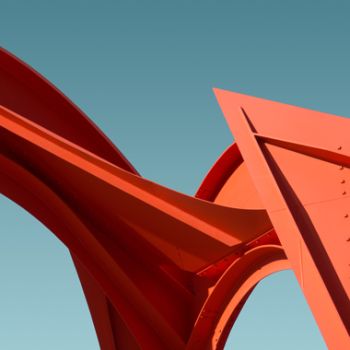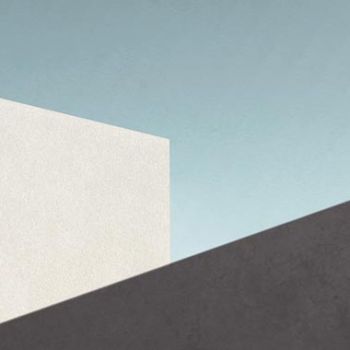Being a user experience (UX) designer is one of the most rewarding career paths in the web design industry, alongside product development and interface design. This is a fast-growing area given the strong focus on user’s experience and the need for a user experience that converts leads and/or performs the desired task of the website. As the title of this position might imply, a user experience designer works to create a good experience for people who “use” the website. In short, they make sure that the navigation experience is as smooth, effective, and efficient as possible.
You might be familiar with the expressions “front end” and “back end”. These terms are very popular within the web design industry; they indicate two of the most common delineation of work when creating a website. The front end deals with the user experience, while the back end deals with the functionality and technical aspects of the website that a user will not see. As you probably guessed, user experience designers primarily deal with the front end of a website and developers deal with the back end.

The best user experience designers know when to embrace particularly ideas, when less is more, and when incorporating more complex design components is beneficial.
Easy to use designs better resonate with the audience in many cases and as a result the website performs very well. If you take a look at some of the most popular websites, you will find that they all have one thing in common. They are really, really simple for the user, providing an intuitive. There are techniques that are applied to design and websites that ensure the overall user experience is positive. If you take a look at some of the large company websites that invested substantial amounts of money into user testing, you will find that their colour schemes are usually limited, with no more than two or three colours together. You may also notice that they avoid overly complicated fonts that are hard to read, and instead use some of the most readily available fonts on the web. This approach is often described as a form of modern minimalism, and it is particularly popular because it is actually very conducive to a great user experience. A website should not only look stunning, but it should also be easy for people to understand and navigate.
User experience designers also works in close proximity with the marketing and branding departments of an organisation. Integrating products, visuals, content, and branding elements into a website is one of the most important aspects of user experience design because people are often influenced by marketing when viewing a website, and it is up to the user experience designer to make sure this doesn’t get them lost in the website.
Since they need to understand the brand and all of the products and services of their websites, user experience designers often do a lot of research to get more familiar with the audience who will be using the website so that they can seamlessly implement its content within their design in a way that is most appropriate and effective. The best professionals in this industry take the time to do thorough product research as a way to establish the foundation for a great user experience in relation to the specific services, products, or brands of the customer they are working for.
While using templates is sometimes an option for new companies, the more established businesses prefer to create their own custom user experience because it results in far better results for the customer and their brand. The website is customised to what the company offers as their brand identity to connect with their audience on a much deeper and more effective level. In short, if the web designer takes the time to understand the brand and the product, they are going to be able to understand the target audience much better, therefore becoming capable of creating a user experience delivers according to its main objective.
It is a very common strategy for user experience designers to create several fictional characters, or user persona, based on information gathered from product research, as well as marketing and branding data. Professional web designers refer to this process as “creating a user persona“. The reason why user personas are created is to assist the user experience designer when designing the user experience relating to the qualities, characteristics, and even personal preference of a perceived target individual. The concept of the average visitor of the website is a universal example, however most brands will have a number of audiences they wish to target. These archetype personas might have his or her goals, frustrations, background, personality, interests, age, profession, social standing, and so much more. This strategy is a very important tool for any user experience designer because it enables them to build an experience for a target group, using a sample individual based on real information as a model. For this reason, it is easy to understand why this industry staple technique is so widespread and so useful. If you are familiar with the worlds of marketing and advertising, you have probably came across similar strategies yourself.
It can be quite frustrating to navigate a website that is not really working for you. Trying to read content with a really poor colour schemes or difficult fonts can be just as frustrating, it might prompt you to stop reading and move on to somewhere else on the web. Obviously, the purpose of a user experience designer is to eliminate this frustration, which is exceptionally important when the visitor is looking for a product or service because they will shop elsewhere.
Having said that, working as a user experience professional is more than just staying true to the basic principles of web design and minimalism. The world of technology is fast-paced, and there are new things happening almost on a daily basis. This is the reason why a user experience designer should always pay close attention to the latest trends. For example, the future of user experience is definitely found in mobile devices. Over half of all the searches on the web are performed on mobile devices, such as smartphones or tablets. Having a website that is only designed for a desktop or laptop user experience is not going to cut it any longer, because it will only cater to what is a shrinking segment of the audience. Today, user experience designers need to make absolutely sure that the websites they work on can be appreciated in full throughout different outlets.
All of the above might fall into what is known as “information architecture”. User experience designer’s need to create a structure for people to be able to navigate through the information in the content of a website. The challenge is designing a website that allows users to navigate in an efficient and natural way, and preventing issues that might frustrate them. How does a UX designer do that? Not only do they use gathered research to model their personas, as mentioned earlier, but they also consider device optimisation and content management, among many other crucial factors. There are many ways to organise a website, it is up to the user experience designer to make sure that it is done in a way that results a pleasant experience for the user.
It is important that website designers consider the user experience as one of the most important elements of a website. This is how they are going to be able to reach out to the target audience, resulting in more sales and positive interactions for visitors to the website. If you are looking to get a professional, custom-built website, be sure to work with a company that can offer the required services and support for the task.







